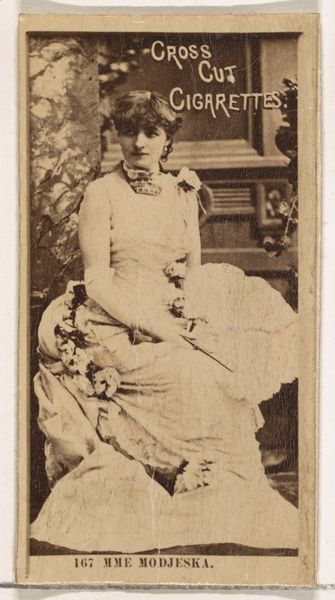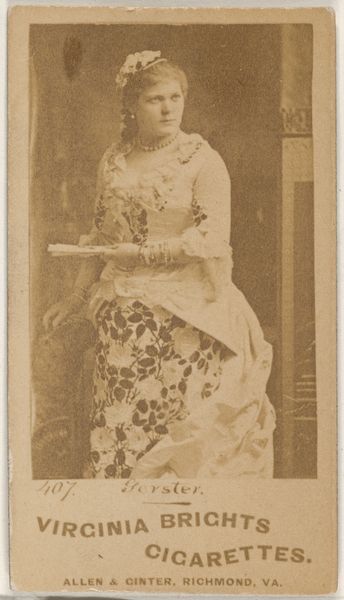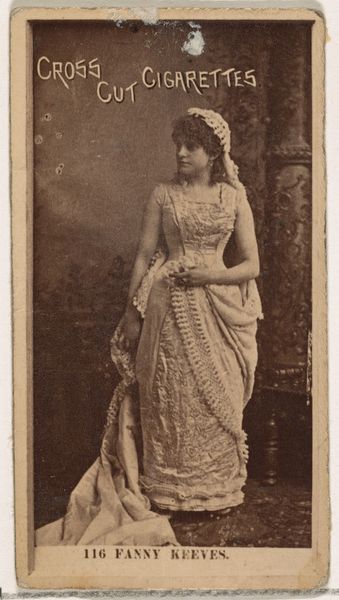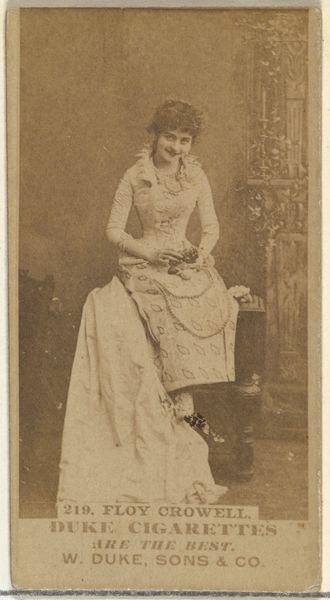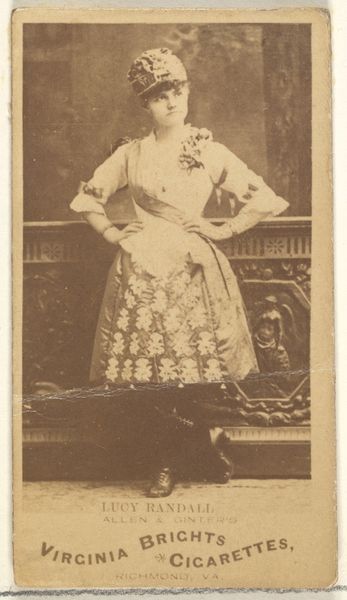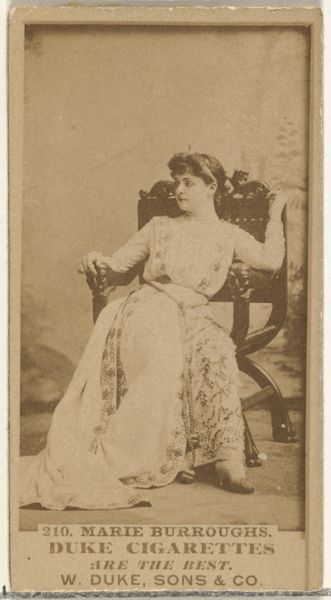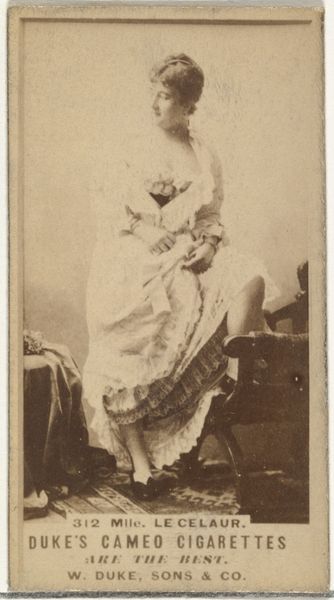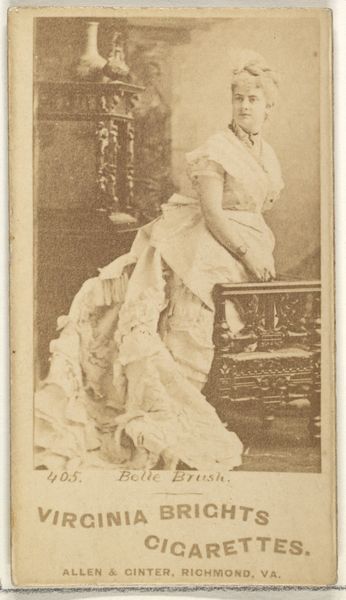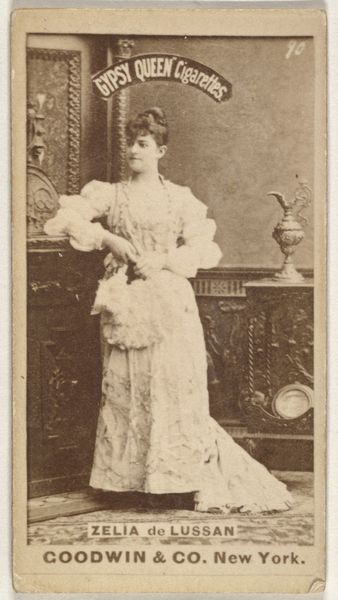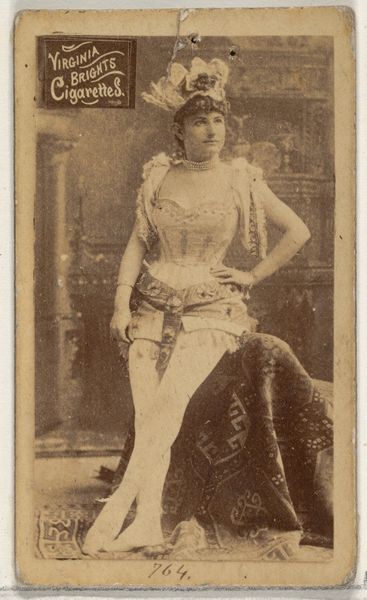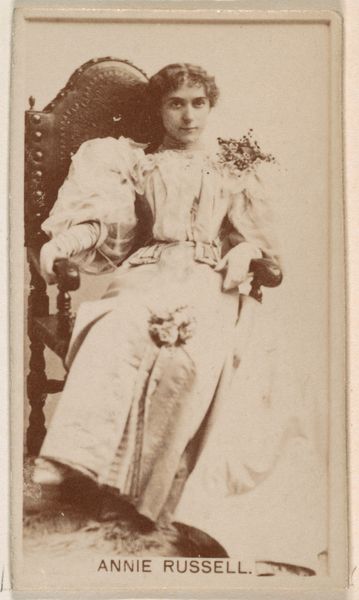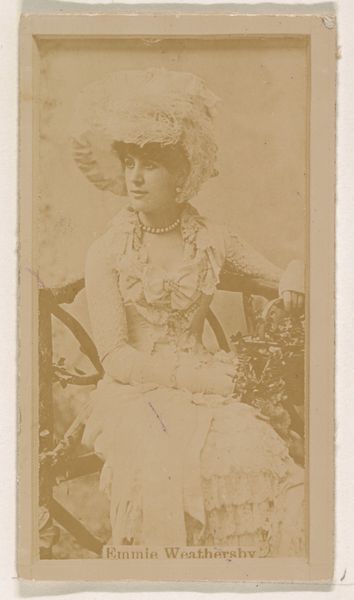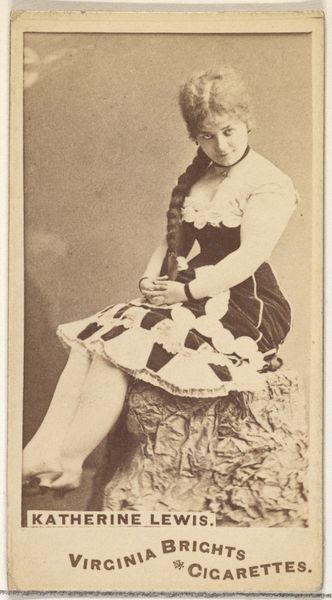![[Actress in studio reclining in heavy wooden chair], from the Actors and Actresses series (N145-8) issued by Duke Sons & Co. to promote Duke Cigarettes by W. Duke, Sons & Co.](/_next/image?url=https%3A%2F%2Fd2w8kbdekdi1gv.cloudfront.net%2FeyJidWNrZXQiOiAiYXJ0ZXJhLWltYWdlcy1idWNrZXQiLCAia2V5IjogImFydHdvcmtzLzdhYjc5MzNjLTE5MmItNGU4NC04NjVhLWVkYjliZGNiZDM5NC83YWI3OTMzYy0xOTJiLTRlODQtODY1YS1lZGI5YmRjYmQzOTRfZnVsbC5qcGciLCAiZWRpdHMiOiB7InJlc2l6ZSI6IHsid2lkdGgiOiAxOTIwLCAiaGVpZ2h0IjogMTkyMCwgImZpdCI6ICJpbnNpZGUifX19&w=3840&q=75)
[Actress in studio reclining in heavy wooden chair], from the Actors and Actresses series (N145-8) issued by Duke Sons & Co. to promote Duke Cigarettes 1890 - 1895
0:00
0:00
drawing, print, photography
#
portrait
#
drawing
# print
#
photography
#
realism
Dimensions: Sheet: 2 11/16 × 1 3/8 in. (6.8 × 3.5 cm)
Copyright: Public Domain
Curator: I’m struck by the overall composure. There's a very still, self-possessed quality that radiates from the photograph, though the coloring lends it a sepia wash of the past. Editor: That’s interesting. I see a carefully constructed persona reflecting the period, somewhere between 1890 and 1895. This piece is titled "[Actress in studio reclining in heavy wooden chair]" from the "Actors and Actresses series (N145-8)," produced by Duke Sons & Co. as a cigarette card. The very act of a tobacco company marketing itself this way speaks to a growing market aimed toward women. Curator: Cigarette cards, of course, served not only as collectables, but as representations of prevailing values. Beyond the celebrity endorsement implicit in featuring an actress, I notice the specific details of dress: the decorative neckline, her posture, the furniture. It conveys a potent blend of theatricality, the display of wealth and power, and aspiration that speaks volumes about women at this historical moment. Editor: I agree, especially that last point! There’s almost an assertive quality, a "gaze" that contradicts typical notions of female passivity during the late 19th century. I wonder who she is behind the elaborate, manufactured pose, trapped in the societal gaze of a burgeoning commercial era. Curator: Right! And even the heavy wooden chair becomes symbolic, both of confinement and authority. But look closer - what symbols of status, class, beauty standards, and theatrical representation are also visible to women themselves at the time of viewing? How does this then represent cultural shifts with advertising? Editor: An excellent question that pushes me to look beyond what initially appears as an innocent, simple pose. She is holding and being held, reflecting the tensions that women of that era were beginning to experience. It's a dialogue between performance and personal agency, staged against this rigid set of symbols, very interesting. Curator: Precisely, there's a tension that underscores the image’s lasting relevance. Seeing this actress invites us to analyze how representations of women function within ever shifting economic and political realities. Editor: And invites reflection on how many ways the commercial commodification of identity has become more ubiquitous today! I’ll be pondering this one for quite some time.
Comments
No comments
Be the first to comment and join the conversation on the ultimate creative platform.
